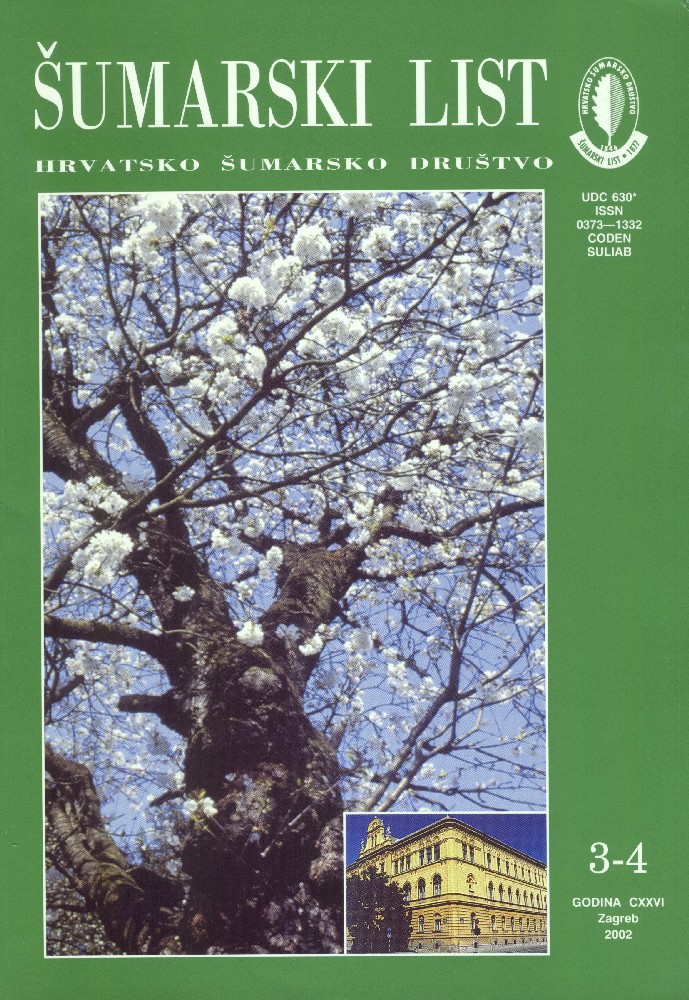| |
| IZVORNI ZNANSTVENI ČLANCI |
| |
|
|
| Pintarić, K. | UDK 630* 226 (001) |
| Problem of the Conversion of Beech Coppices into Beech High Forests
pdf
HR
EN
|
119 |
| Korčić, S. | UDK 630* 242 (001) |
| The Influence of Thinning in the Stand of Common Pine (Pinus sylvestris L.) Within a Plantation
pdf
HR
EN
|
129 |
| Šajković, A. | UDK 630* 979 + 469 (001) |
| A Latent Structure of Forestry Students´ Opinion on the Globalisation in Croatia
pdf
HR
EN
|
137 |
| |
| PRETHODNO PRIOPĆENJE |
| |
|
|
| Čavlović, J., Kremer, D. | UDK 630* 561 |
| The Characteristics of the Diameter Growth and Increment of the Trees in the Stands of the Narrow-leaved Ash and the Introduced White Ash in Central Posavina
pdf
HR
EN
|
145 |
| |
| PREGLEDNI ČLANCI |
| |
|
|
| Juretić, N., Šeruga, M., Škorić, D. | UDK 630* 449 |
| Phytoplasma Diseases of Forest Trees
pdf
HR
EN
|
155 |
Summary: Phytoplasmas, formerly called mycoplasmalike organisms (MLOs) have been known to be the causal agents of plant diseases since 1967 (Doi i sur. 1967). So far phytoplasmas have been isolated from more than 600 plant species. Phytoplasmas, mycoplasmas and spiroplasmas are similar organisms which represent the smallest free-living procaryotes. These three microorganisms lack a rigid cell wall and are bound only by a triple-layer unit membrane. They are very pleomorphic. Phytoplasmas and spiroplasmas occur mostly in the phloem tissue of plants. Syndromes of phytoplasmas and spiroplasmas are phyllody, virescense and dwarfing. Phytoplasmas have been detected in forest trees belonging to at least 25 genera. Most of the trees are only slightly affected and tolerate the infection until other interacting stress factors cause loss of vigour and dieback. Earlier phytoplasma detection and identification were based on electron and fluorescence microscopy. However, nowadays detection and identification are possible by several DNA-based techniques, among which those involving the polymerase chain reaction (PCR) have become very popular because of high sensitivity.
Key words: forest trees; phytoplasmas; spiroplasmas |
| |
| STRUČNI ČLANCI |
| |
|
|
| Tolić, I. | UDK 630* 907.1 |
| The Beautiful and Rich Ecosystem of the Croatian Adriatic should be Preserved
pdf
HR
EN
|
165 |



